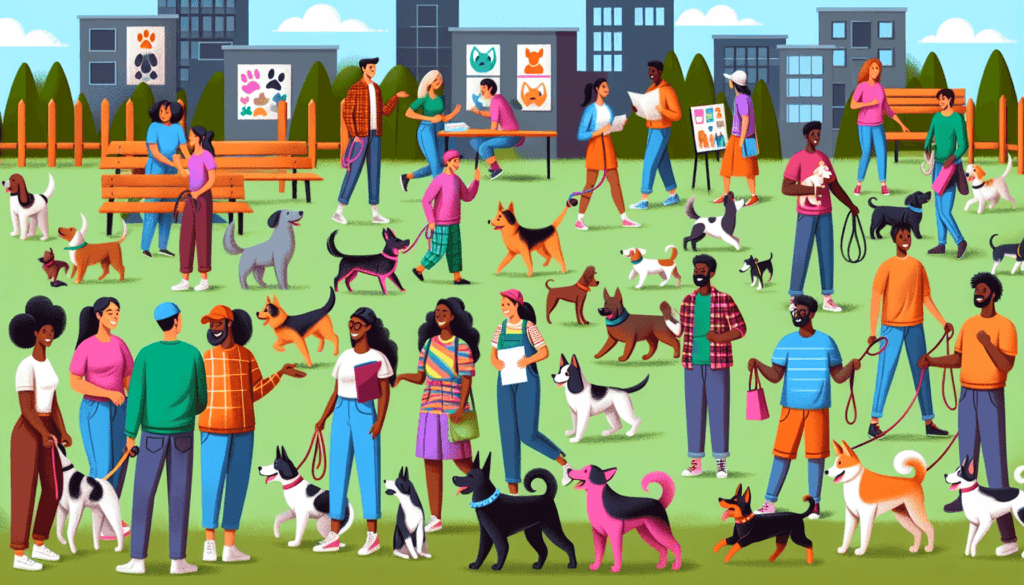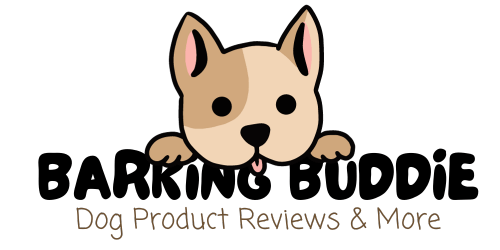Are you passionate about dogs? Do you want to bring together fellow dog lovers in your community? Starting a dog community newsletter is a fantastic way to connect with like-minded individuals and provide valuable information and updates about all things canine. In this article, we will explore the essential steps and tips on how to start a dog community newsletter that will engage and inform your readers, while fostering a sense of unity among dog owners in your neighborhood. Whether you’re looking to share training tips, feature adorable dog stories, or promote local dog-friendly events, this guide will help you get started on creating a vibrant and successful dog community newsletter.

Choosing a Name for Your Newsletter
Choosing a name for your dog community newsletter is an exciting opportunity to reflect the values and beliefs of your local dog owners. The name of your newsletter should not only resonate with your target audience but also convey the sense of community you aim to build. Consider incorporating something that represents the local area or specific dog-related themes to create a meaningful and memorable name.
Reflecting the Community
When choosing a name for your newsletter, it is essential to reflect the community you are trying to serve. Think about what makes your local dog community unique and consider incorporating those elements into the name. You could include the name of your town or neighborhood, or even a word that symbolizes the bond between dogs and their owners. Remember, the name of your newsletter sets the tone for your content and should evoke a sense of inclusion and togetherness.
Creating a Catchy Title
While reflecting the community is crucial, it’s also essential to create a catchy and attention-grabbing title for your newsletter. A catchy title will capture the interest of dog owners and increase the chances of them subscribing and engaging with your content. Consider using puns, alliteration, or rhymes to add a playful element to your title. Additionally, using words that evoke positive emotions or convey the benefits of being a part of your dog community can also make your title more attractive.
Defining Your Target Audience
Identifying your target audience is a crucial step in creating a successful dog community newsletter. To effectively connect with your readers, you need to have a clear understanding of who they are and what they are looking for in a newsletter. When defining your target audience, focus on dog owners in your local area who are actively involved in the dog community.
Identifying Local Dog Owners
Identifying local dog owners is a crucial part of defining your target audience. Understanding the demographics of your local community, such as age, gender, and interests, will help tailor your content to their specific needs. Consider conducting surveys, attending local dog events, or reaching out to local dog-related businesses to gather information about your target audience.
Determining the Newsletter’s Purpose
Determining the purpose of your newsletter is essential as it will guide your content creation and help you meet the needs and expectations of your target audience. The purpose of your newsletter could be to inform, educate, entertain, or all of the above. Think about the value you want to provide to your readers and how your newsletter can help them stay informed, learn new things, and be a part of the dog community.
Planning Newsletter Content
Once you have defined your target audience and the purpose of your newsletter, it’s time to plan your content. A well-rounded newsletter will include a variety of sections that cater to the needs and interests of your readers. Here are some key sections to consider:
News and Updates
Keeping your readers informed about the latest events, news, and developments in the local dog community is essential. This section can include updates on local dog shows, new dog-friendly establishments, or any dog-related legislative changes. Keeping your readers in the know will help foster a sense of community and provide valuable information.
Featured Dogs and their Owners
Sharing stories and profiles of local dogs and their owners is a great way to showcase the diversity and uniqueness of your dog community. Feature dogs from different backgrounds, breeds, and age groups, and share their stories, interests, and accomplishments. This section not only celebrates the bond between dogs and their owners but also creates a sense of pride and recognition within the community.
Upcoming Events
Make sure to include a section dedicated to upcoming dog-related events in your area. This can include dog shows, adoption events, fundraisers, or training workshops. Providing your readers with easily accessible information on upcoming events will help them stay connected and engaged in the dog community.

Training Tips and Advice
Many dog owners are constantly seeking advice and tips on how to train and care for their furry friends. Including a section dedicated to training tips and advice can be incredibly valuable to your readers. Consider partnering with local dog trainers or experts to provide credible and practical tips that will help your readers enhance their relationship with their dogs.
Health and Wellness Tips
Just like humans, dogs require proper care and attention to maintain their overall health and well-being. Include a section in your newsletter that provides health and wellness tips for dogs. This could cover topics such as nutrition, exercise, grooming, and preventative care. Make sure to provide accurate and reliable information to help keep your readers’ dogs happy and healthy.
Lost and Found Section
Creating a space for lost and found notices in your newsletter can be a valuable resource for the local dog community. In this section, readers can post information about lost or found dogs, helping them reunite with their owners or find new forever homes. This section serves as a way to support the community and demonstrates your newsletter’s commitment to making a positive impact.
Gathering and Creating Content
Once you have planned your newsletter content, it’s time to gather and create the content for each section. Here are some strategies to help you:
Connecting with Local Dog Owners
To create a newsletter that truly reflects the community, it’s important to connect with local dog owners. Attend local dog events, join social media groups, or collaborate with dog-related businesses to establish relationships with dog owners. This will not only help you gather relevant content but also make your newsletter more authentic and community-oriented.

Encouraging Submissions
Encourage your readers to actively participate in your newsletter by submitting content. This can include stories about their dogs, training tips they’ve found helpful, or even photos of their furry friends. By giving your readers a platform to share their experiences and perspectives, you will foster a sense of ownership and community within your newsletter.
Creating Original Content
While gathering content from the community is important, don’t forget to create original content as well. This can include articles written by you or other members of your team, interviews with local dog trainers or veterinarians, or even research-based pieces on dog-related topics. By providing unique and valuable content, you will establish your newsletter as a reliable and informative resource for your readers.
Designing Your Newsletter
The design of your newsletter plays a crucial role in capturing your readers’ attention and keeping them engaged. Here are some key factors to consider when designing your newsletter.
Choosing a Template or Layout
When designing your newsletter, consider using a template or layout that is visually appealing and easy to read. There are many newsletter design platforms available that offer pre-designed templates to choose from. Select a template that aligns with the tone and style of your newsletter while still being user-friendly for your target audience.
Selecting Fonts and Colors
Fonts and colors are important design elements that can enhance the overall look and feel of your newsletter. Choose fonts that are easy to read and reflect the tone of your content. When it comes to colors, keep them consistent with your brand or the theme of your newsletter. Avoid using too many colors or fonts as it can create visual clutter and distract your readers.

Using Eye-catching Graphics
Including eye-catching graphics in your newsletter can help capture your readers’ attention and make your content more visually appealing. Consider adding high-quality images of local dogs or dog-related events to enhance your content. Infographics and illustrations can also be effective in conveying information in a clear and engaging way. Just make sure that any graphics you use are relevant to your content and do not overpower the text.
Managing Subscription and Distribution
Once your newsletter is designed and ready to go, you need to manage the subscription and distribution process effectively to ensure your content reaches your target audience.
Setting up an Email List
Start by setting up an email list to manage your subscribers. Use a reliable email marketing platform that allows you to collect email addresses and segment your audience based on their preferences or location. Make it easy for readers to subscribe to your newsletter by including a subscription form on your website or social media channels.
Exploring Newsletter Platforms
When it comes to distributing your newsletter, consider using a platform that offers features to track open rates, click-through rates, and other engagement metrics. This will help you measure the success of your newsletter and make data-driven decisions moving forward. Popular newsletter platforms include Mailchimp, Constant Contact, and ConvertKit.
Promoting Your Newsletter
To grow your subscriber base, actively promote your newsletter through various channels. Include links to subscribe on your website, social media profiles, and even in your email signature. Consider collaborating with local dog-related businesses to promote your newsletter to their clients. You can also offer incentives, such as exclusive content or discounts, to encourage people to subscribe to your newsletter.

Establishing a Publishing Schedule
Consistency is key when it comes to newsletters. Establishing a publishing schedule will help you stay organized and keep your readers engaged.
Determining Frequency
Consider how often you can realistically publish your newsletter. Weekly or bi-weekly newsletters may be more suitable for timely updates and news, while monthly newsletters can offer more in-depth content. Choose a frequency that suits your resources and aligns with your readers’ preferences.
Setting Deadlines
Setting deadlines for content creation, editing, and design will help you stay on track and ensure that your newsletter is consistently delivered on time. Communicate these deadlines to your contributors and team members to ensure everyone is aware of their responsibilities and can meet the deadlines effectively.
Proofreading and Editing
Before sending out your newsletter, it’s crucial to proofread and edit it thoroughly to make sure it is error-free and polished.
Ensuring Accuracy and Consistency
Double-check all the information you include in your newsletter for accuracy. Ensure that names, dates, and details are correct and consistent throughout the entire newsletter. Inaccurate information can undermine your credibility and lead to confusion among your readers.
Checking Grammar and Spelling
Proofread your newsletter for grammar and spelling mistakes. Even small errors can impact the readability and professionalism of your content. Use a spell-check tool or consider having someone else review your content to catch any mistakes you may have missed.
Seeking Feedback
To continuously improve your newsletter, seek feedback from your readers. Encourage them to provide suggestions, ask for content requests, or even share testimonials about how your newsletter has benefited them. This will help you tailor your content to their needs and maintain a strong connection with your readers.
Engaging and Growing Your Dog Community
To create a thriving dog community, it’s important to engage your readers and actively work towards growing your community.
Encouraging Feedback and Discussion
Include opportunities for readers to provide feedback and engage in discussions in your newsletter. Ask questions, include polls, or even feature a “Letters to the Editor” section where readers can share their thoughts and opinions. Actively respond to comments and feedback to create a sense of community and foster conversations among your readers.
Organizing Community Events
Take the initiative to organize community events for local dog owners to gather and connect. This could include dog walks, picnics, or even educational seminars. By offering opportunities for dog owners to meet and socialize, you’ll strengthen the sense of community and encourage ongoing engagement with your newsletter.
Collaborating with Local Businesses
Partnering with local dog-related businesses can be mutually beneficial. Feature their services or products in your newsletter, and in return, they can promote your newsletter to their client base. This collaboration not only strengthens your community ties but also provides valuable exposure for both parties.
Measuring Success
To determine the success of your newsletter and make informed decisions, it’s important to measure various metrics.
Analyzing Open and Click Rates
Track the open and click rates of your newsletter to assess its performance. Analyzing these metrics will help you gauge the effectiveness of your subject lines and email content. If you notice a decline in open or click rates, it may be an indicator that adjustments need to be made to retain and engage your readers.
Tracking Subscriber Engagement
Monitor how readers engage with your newsletter content. Pay attention to the sections or topics that receive higher engagement levels. This information will help you identify what resonates most with your readers and can guide your future content creation.
Receiving Feedback from Readers
Regularly seek feedback from your readers to understand their needs and preferences. Ask for suggestions, conduct surveys, or even set up a feedback form on your website. This feedback is invaluable in improving your newsletter and ensuring it continues to provide value to your community.
Starting a dog community newsletter is not only an opportunity to share valuable information but also a chance to build a supportive and engaged community. By reflecting the unique qualities of your local dog community, planning well-rounded content, and engaging with your readers, you can create a successful and impactful newsletter. Stay committed to consistently delivering high-quality content, and your dog community newsletter will continue to grow and flourish.


